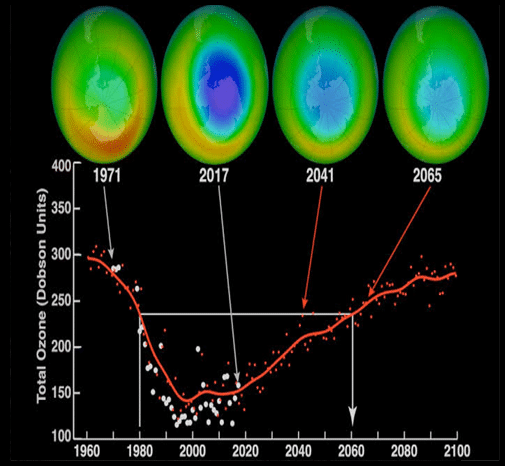ANTARCTICA’S OZONE HOLE EXPANSION: A MID-SPRING SHIFT
Why in the News?
- Recent research by Annika Seppilä and others analyzed monthly and daily ozone changes from 2001 to 2022.
- Data exclusion for 2002 and 2019 revealed a persistent ozone reduction of 26% in the core of the ozone hole since 2004.
- Dynamical changes in the mesosphere, the atmospheric layer above the stratosphere, are potentially driving this reduction.
Source: Planet Aid
Ozone Trends in Mid-Spring (October)
- The core of the Antarctic ozone in mid-spring has experienced a substantial 26% reduction since 2004.
- Contrary to previous expectations, this reduction challenges reported recovery trends in total ozone.
- Recovery trends, however, still persist in early spring (September), showcasing a complex ozone dynamic.
Montreal Protocol and Ozone Recovery
- The Montreal Protocol, initiated in 1987, successfully banned the production of controlled ozone-depleting substances.
- Despite its historical success, recent years (2020-2022) have seen the reappearance of large and long-lived ozone holes over Antarctica in mid-spring.
Ongoing Challenges and Importance of Monitoring
- Continuous monitoring and evaluation of the ozone layer are crucial due to Earth’s changing climatic conditions.
- Understanding ozone variability remains of utmost importance, given the significant role Antarctic stratospheric ozone plays in Southern Hemisphere climate variability.
Southern Hemisphere Atmosphere Impact
- The findings suggest that alterations in the Southern Hemisphere atmosphere contribute to a sustained Antarctic ozone hole.
The study emphasizes the need for a deeper understanding of the atmospheric dynamics influencing ozone patterns in the region.

 Source: Planet Aid
Source: Planet Aid

